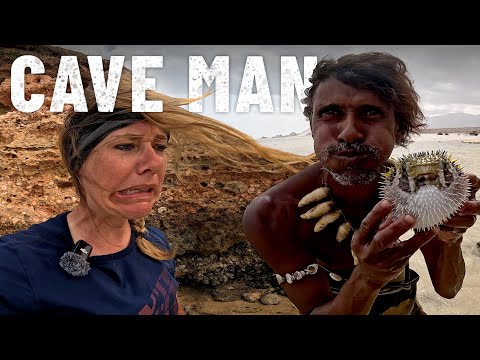MASTABA TOMBS - SAQQARA EGYPT

hello everyone today we're going to sakara let's go [Music] [Music] the most sacred necropolis in ancient egypt for thousands of years from the early dynasty up to the roman period welcome to saqqara [Music] [Music] i love this contrast in sakara on the right a lush vegetation of the nile valley on the left harsh desert landscape and in between them thousands years of [Music] history [Music] so [Music] the guide soccer was the patron of the necropolis he was often portrayed dressed in green and with a hyenas head in the necropolis of saqqara the largest in egypt we can find officials dignitaries and royal burials from the first dynasty of egypt up to the persian and ptolemic periods that's why it's one of the best locations to explore the earliest form of an egyptian royal burial structure known as mastaba we've already seen mastaba in the medium episode link below but where does the word mastaba come from why and for whom were they built mastaba was first used as an archaeological term in the 19th century by august mariette his workmen noticed that the structure resembles the brick bench constructed outside and in front of the egyptian houses for sitting chatting and relaxing from far away mastaba really looks like a bench however ancient egyptians called it house of eternity today we're going to explore some of them mastaba has a flat roof and a rectangular shape with sloping sides facing outward first mustabas were constructed with sun-dried mud bricks from the nile in later periods mud bricks were replaced with limestone our first mastaba today is the one of [Applause] [Music] mehu [Music] [Music] [Music] hey the walls inside the tomb are beautifully decorated by a skillful artist as each human figure has a different characteristic feature beyond the entrance we can admire hunting and agricultural scenes all paintings and carvings are more than 4 000 years old it's also one of the most colorful mustabas then later on painted carvings present a funeral procession with offerings for seated mahou the most breathtaking feature of the whole tune is its false door with yellow hieroglyphs on the dark red background mimicking the appearance of granite [Music] [Music] mustabas of the old kingdom have beautifully ornamented four stars in the main offering room generally facing west it enabled the disease transmission to the other world of living not only the prayers and offering formulae have been inscribed on the door but also titles names and even sometimes a depiction of the disease was an egyptian chief of justice and vizier of the sixth dynasty probably under king teddy the vizier's main duty was to supervise the running of the country much like a prime minister today he was the highest official serving the pharaoh even though mastamas in early dynasties were usually built for royalty and high officials we're about to see the tomb known as the tomb of the butcher mastaba of irukaptak renowned for the number and state of preservation of its coloured statues [Music] [Music] however hirocapta didn't only work as a butcher he was the head of the butchers of the great house the nickname tomb of the butcher comes from the fact that in the eastern part of the tomb the wall is adorned with the buttering scenes taking place in the presence of the deceased irukaptak in the inner part of the tomb we can find food offerings painted on the wall as well as naval and hunting scenes in this part of the tomb were buried at least 10 other family members [Music] we can clearly see that in comparison with the tomb of mahu the quality of carvings paintings and reliefs significantly differs on the opposite west wall there are four large unpainted statues and the false door all mustabas were oriented along the north-south axis this alignment was to ensure entrance to eternity ancient egyptians believed that the soul is divided in the ba which could travel between the mummy and the next world the car that could inhabit a statue of a deceased person and the akh that was transformed in the tomb into a spirit that could live in the next world [Music] mastaba rests on stone foundation's underground it has false entrance doors with or without external atrium their roof was covered with an earth mount or the bree the sarcophagus along with treasures was placed deep into the ground and the burial chamber was sealed to protect the tomb from the robbers the shaft was filled with sand and stones and the entrance was bricked up the funeral was celebrated and gifts were offered in the small external atrium in front of the false doors where the deceased was portrayed as if participating in the rituals we are now in the mastaba of edut at the time of the sixth dynasty princess says seshet that's quite a name called erud took over the burial chambers which were actually built for a vizier who lived at the end of the fifth dynasty at the time of a pharaoh unas [Music] princess edout entirely altered the original decorations her moustaba has ten chambers of which only five are decorated as well as the usual sins of offerings hunting and fishing the tomb contains numerous scenes of everyday life please take a look at all these details once again craftsmanship and precision of ancient egyptian artists left me in awe [Music] we are driving to see a probably the best known non-royal mastaba of the old kingdom it is remarkable for the range of topics shown in its reliefs the quality of the execution and their excellent state of preservation [Music] it belongs to tai who lived in the middle of the fifth dynasty his title the director of the hairdressers of the great house meant he had close access to the king lending him influence and power [Music] we have here a great example of a certup an ancient tomb structure that served as a chamber for the cast statue of a deceased individual in the middle of the pillared courtyard towards the south eastern corner we have a decent to the oblong burial chamber which measures 545 by 285 meters the sarcophagus as well as the burial chamber are totally undecorated the body of thai has never been found [Music] we have to go back the dimensions of the tomb more than 34 meters east to west and more than 42 meters north to south and also the quality of the decorations show the importance of the character his functions and his material resources the headless statues probably one of plato and one of aristotle were placed here circa 305 till 285 bc by the ptolemy the first today this place is known as the philosopher's circle we are entering the mastaba of mareruka he succeeded kagamine as a vision under the pharaoh 30 his huge mastaba has 31 rooms 21 for him five for his wife and five more for his son in the wall scenes are to be found proof of the emergence of a genuine aristocracy which was to bring about the collapse of the royal line at the end of the sixth dynasty there's a theory that mariruka enjoyed unusual status and exceptional wealth but as soon as titi produced a son of his own mariruka's family seemed to have lost their special position [Music] his almost two meters high statue rises in front of us he is clothed in the starched kilt and was a thick wig he probably held a scepter in his left hand [Music] [Music] this relief shows meruka with his wife in front of him and his mother behind him like in other mastabas the agricultural hunting and animal sins are depicted on the tomb walls [Music] mareruka's monument appears some to us when compared to the small pyramid of titi and long mararuka's titles we can find inspector of the priests attached to the pyramid of titi governor of the palace scribe of the divine books overseer of the royal record scribes chief lector priest director of the scribes of the archives director of all the works of the king [Music] next to mararuka stone we're entering the mastaba of his predecessor kagamini who held probably 52 administrative religious and honorary titles the art in kagamine is quite innovative for example the scene with a baby piglet which is slapping milk from the mouth of a swineherd while a servant holds a jar with more milk another feature of kagemi's reliefs is their precision [Music] [Music] so [Music] [Music] a tiny happy owl with kagemi himself [Music] to last but not least visio mustabas before us the first one belongs to nephi's hashimra his tomb appears to be unfinished and at least two of his sons had their images and names erased from it a detailed and beautiful trio of statues are carved into the false door [Music] [Music] [Music] the second mastaba is known as the tomb of a doctor because additionally to the usual daily life and funerary scenes we can find scenes of a food operation and circumcision which back then was a common procedure however there is no evidence of holding any medical titles [Music] there are of course a lot more tombs pyramids and exotic names to explore but don't worry it's not our last episode in saqqara [Music] [Music] i hope you enjoyed today's journey please subscribe to my channel and see you on another ancient site hey [Music] you
2021-05-04 12:13


